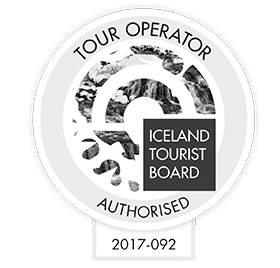
Visiting the Land of Contrasts and Natural Wonders
Strategically positioned just south of the Arctic Circle, Iceland is surprisingly accessible, with a flight from London taking only about 2½ hours. The Keflavik International Airport, located in the southwest, serves as the gateway to this enchanting land, a mere 45-minute drive from the capital, Reykjavik.
Iceland, known as the land of fire and ice, is a mesmerizing destination that captivates visitors with its stunning landscapes, vibrant culture, and unique geothermal wonders. For those contemplating a trip to this Nordic island, it's essential to be well-prepared to make the most of your experience.
Here's a practical guide with tips and insights to ensure your visit to Iceland is a seamless and unforgettable adventure.
Weather and Clothing
Iceland's weather is characterized by its unpredictability and rapid changes, influenced by its northern location and proximity to the Arctic Circle. Visitors should be prepared for a mix of sunshine, rain, wind, and even snow throughout the year.
Seasonal Considerations:
Summer (June-August): While summers are relatively mild, temperatures can range from 10 to 20 degrees Celsius (50 to 68 degrees Fahrenheit). Days are long with almost continuous daylight, allowing for extended exploration. Light layers, waterproof jackets, and sturdy footwear are recommended.
Autumn (September-November): Expect cooler temperatures, ranging from 0 to 10 degrees Celsius (32 to 50 degrees Fahrenheit). Rain and wind are common, and the landscape showcases stunning fall colors. Bring warmer layers, waterproof clothing, and windproof gear.
Winter (December-February): Winters are cold, with temperatures often hovering between -5 and 5 degrees Celsius (23 to 41 degrees Fahrenheit). Snow is prevalent, creating a winter wonderland. Pack insulated layers, a waterproof outer shell, thermal accessories, and sturdy, insulated boots.
Spring (March-May): Spring is a transitional period with temperatures rising from 0 to 10 degrees Celsius (32 to 50 degrees Fahrenheit). Melting snow and blooming landscapes characterize this season. Bring layers, waterproof gear, and consider traction devices for icy terrain.
Clothing Tips:
Regardless of the season, waterproof and windproof clothing is essential due to the ever-changing weather. Comfortable, moisture-wicking layers are recommended, along with sturdy, waterproof boots. Accessories like gloves, hats, and scarves provide extra warmth.
Visitors should dress in easily adaptable layers to accommodate the fluctuating conditions and be prepared for sudden weather shifts by carrying a small backpack with extra clothing. Additionally, sunglasses and sunscreen are crucial during the summer months when daylight is extended.
By staying informed about Iceland's diverse climate and packing accordingly, visitors can fully enjoy the breathtaking landscapes and unique experiences that this captivating country has to offer.
Driving in Iceland
Renting a car or a 4x4 SUV from Holdur Car Rental is probably the best way to explore Iceland's breathtaking landscapes. Remember to drive on the right side of the road. Weather conditions can be challenging, so check road conditions and weather forecasts regularly.
If you're planning to explore the interior highlands, a four-wheel-drive vehicle is necessary, as gravel roads dominate this region. Driving in Iceland is the most rewarding and relaxing way to see the country. In our Icelandic driving guide you can discover what you need to know before you set off.

Hot Springs and Geothermal Pools
Iceland is renowned for its geothermal wonders. Situated on the Mid-Atlantic Ridge, a tectonic plate boundary that runs through the Atlantic Ocean. This location results in intense geothermal activity, making the island a hotbed for hot springs, geysers, and volcanic activity.
The country's geothermal energy is harnessed for electricity and heating, but it also creates numerous natural hot springs and geothermal pools, scattered throughout the landscape.
Don't miss the opportunity to relax in the country's numerous hot springs and geothermal pools. The Blue Lagoon, located near Reykjavik, is a popular choice, but also consider the less crowded and equally stunning Myvatn Nature Baths or the Secret Lagoon.
For those seeking a more remote and adventurous hot spring experience, Hveravellir in the central highlands is an ideal destination. Surrounded by colorful rhyolite mountains and geothermal vents, Hveravellir offers a unique contrast between the cold Icelandic wilderness and the warmth of the natural hot springs.
In Iceland, hot springs are deeply ingrained in the local culture and traditions. The act of bathing in natural hot springs is not only a means of relaxation but also a social and communal activity. Locals often embrace the practice of "going to the pool" as a way to unwind, socialize, and promote overall well-being.
Local Cuisine & Food Heritage
Icelandic cuisine reflects the island nation's unique geography, climate, and cultural history. Rooted in Nordic traditions with a focus on locally sourced ingredients, Icelandic food has gained international recognition for its purity and distinct flavors.
The harsh Arctic climate has influenced traditional dishes, with an emphasis on hearty, warming meals. One iconic dish is "Þorramatur," a selection of preserved and fermented foods typically enjoyed during the midwinter festival of Þorrablót. This includes delicacies like hákarl (fermented shark), svið (sheep's head), and pickled ram's testicles.
Seafood plays a prominent role in Icelandic gastronomy, given the abundance of pristine waters surrounding the island. Dishes like "harðfiskur" (dried fish) and "hangikjöt" (smoked lamb) showcase traditional preservation methods that have been passed down through generations.
The burgeoning culinary scene in Iceland's capital, Reykjavik, offers a modern twist on traditional fare. Renowned chefs fuse local ingredients with international influences, creating a diverse and innovative food landscape. Visitors can explore local markets, such as the Reykjavik Flea Market, to sample artisanal cheeses, fresh produce, and handmade treats.
Respect Nature
Iceland takes great pride in its pristine environment, and visitors are expected to respect and preserve its natural beauty. Stay on marked paths, adhere to conservation guidelines, and avoid disturbing wildlife. The "Leave No Trace" principle should be a mantra for every traveler exploring Iceland's diverse landscapes.
Currency and Cash
The local currency is the Icelandic Króna (ISK). While credit cards are widely accepted, having some cash on hand can be beneficial, especially in more remote areas where card facilities may be limited. ATMs are available in towns and cities, but it's wise to carry some cash for small purchases and emergencies.
Language
Icelandic is the official language, but English is spoken by the majority of the population, making communication relatively easy for visitors. However, learning a few basic Icelandic phrases can enhance your experience and show respect for the local culture.
Safety Precautions
Iceland is considered one of the safest countries in the world, but it's essential to be mindful of natural hazards. Inform someone about your travel plans, especially if venturing into remote areas. Always check the weather forecast, and be prepared for sudden changes. In case of emergencies, dial 112.
Cultural Etiquette
Icelanders are friendly and welcoming, and respecting local customs is essential. When entering someone's home, it's customary to remove your shoes. Tipping is not common, as service charges are typically included in bills. Engaging with locals and learning about their traditions can add depth to your travel experience.
Your Iceland Adventure awaits
Visiting Iceland is a once-in-a-lifetime experience, and with proper preparation, you can make the most of this enchanting destination. From the awe-inspiring landscapes to the warm hospitality of the locals, Iceland offers a unique blend of natural wonders and cultural richness. Follow these practical tips to ensure a smooth and rewarding journey through the land of fire and ice.
What is the best time of year to visit Iceland?
The summer months of June to August are popular for visiting Iceland, as the weather is milder, and the days are long with almost 24 hours of daylight. However, if you're interested in seeing the Northern Lights, the winter months from September to March are ideal.
What are the must-see attractions in Iceland?
Some must-see attractions include the Golden Circle (Þingvellir National Park, Geysir Geothermal Area, and Gullfoss Waterfall), the Blue Lagoon, Jökulsárlón Glacier Lagoon, Seljalandsfoss and Skógafoss waterfalls, and the black sand beaches at Reynisfjara.
Do I need a visa to visit Iceland?
Iceland is a member of the Schengen Agreement, so if you are a citizen of a Schengen Area country, you do not need a visa for short stays. Citizens of some other countries, including the United States and Canada, can stay in Iceland for up to 90 days without a visa. Check with the Icelandic Directorate of Immigration for the most up-to-date information.
What should I pack for a trip to Iceland?
Pack layers, waterproof clothing, sturdy walking shoes, and a good camera. Weather can be unpredictable, so it's essential to be prepared for rain, wind, and potentially cold temperatures. Also, don't forget your swimsuit for a visit to the geothermal pools!
Are there any safety considerations for visitors in Iceland?
Iceland is generally a safe destination for tourists. However, it's essential to be aware of the weather conditions, especially if you plan to explore remote areas. Pay attention to local advisories, respect nature, and follow safety guidelines, such as staying on marked paths and trails.
Can I see the Northern Lights in Iceland?
Yes, Iceland is an excellent location to witness the Northern Lights, especially during the winter months. The best chances of seeing the Aurora Borealis are in remote areas away from city lights, and guided tours are available for those interested in this natural phenomenon.
Are there any specific cultural norms or etiquettes to be aware of?
Icelanders are generally friendly and welcoming. It's customary to greet people with a handshake, and tipping is not a common practice. Respecting nature is a significant cultural norm, so sticking to designated paths and following Leave No Trace principles is important.







 - Bílaleiga Akureyrar
- Bílaleiga Akureyrar

